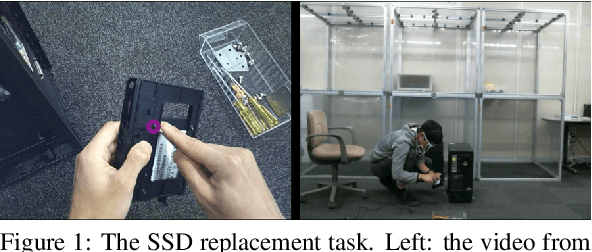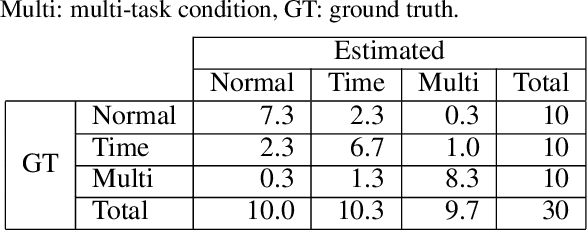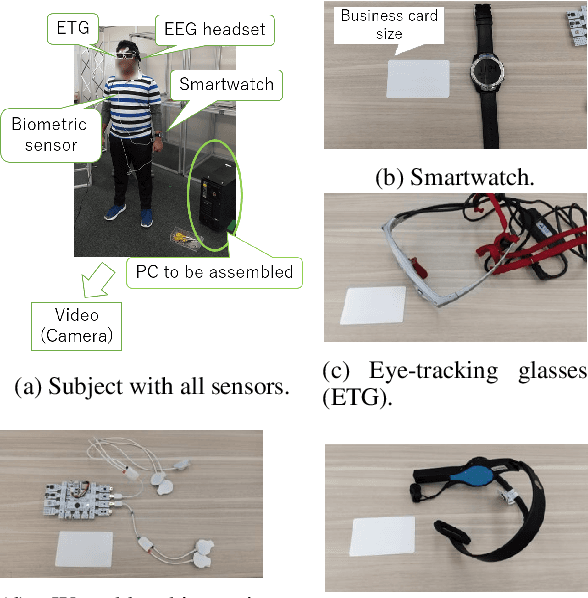Hiroto Nagayoshi
Weakly-Supervised Crack Detection
Jun 14, 2022



Abstract:Pixel-level crack segmentation is widely studied due to its high impact on building and road inspections. Recent studies have made significant improvements in accuracy, but overlooked the annotation cost bottleneck. To resolve this issue, we reformulate the crack segmentation problem as a weakly-supervised problem, and propose a two-branched inference framework and an annotation refinement module that requires no additional data, in order to counteract the loss in annotation quality. Experimental results confirm the effectiveness of the proposed method in crack segmentation as well as other target domains.
Human-error-potential Estimation based on Wearable Biometric Sensors
Nov 15, 2021



Abstract:This study tackles on a new problem of estimating human-error potential on a shop floor on the basis of wearable sensors. Unlike existing studies that utilize biometric sensing technology to estimate people's internal state such as fatigue and mental stress, we attempt to estimate the human-error potential in a situation where a target person does not stay calm, which is much more difficult as sensor noise significantly increases. We propose a novel formulation, in which the human-error-potential estimation problem is reduced to a classification problem, and introduce a new method that can be used for solving the classification problem even with noisy sensing data. The key ideas are to model the process of calculating biometric indices probabilistically so that the prior knowledge on the biometric indices can be integrated, and to utilize the features that represent the movement of target persons in combination with biometric features. The experimental analysis showed that our method effectively estimates the human-error potential.
Crack Detection as a Weakly-Supervised Problem: Towards Achieving Less Annotation-Intensive Crack Detectors
Nov 04, 2020



Abstract:Automatic crack detection is a critical task that has the potential to drastically reduce labor-intensive building and road inspections currently being done manually. Recent studies in this field have significantly improved the detection accuracy. However, the methods often heavily rely on costly annotation processes. In addition, to handle a wide variety of target domains, new batches of annotations are usually required for each new environment. This makes the data annotation cost a significant bottleneck when deploying crack detection systems in real life. To resolve this issue, we formulate the crack detection problem as a weakly-supervised problem and propose a two-branched framework. By combining predictions of a supervised model trained on low quality annotations with predictions based on pixel brightness, our framework is less affected by the annotation quality. Experimental results show that the proposed framework retains high detection accuracy even when provided with low quality annotations. Implementation of the proposed framework is publicly available at https://github.com/hitachi-rd-cv/weakly-sup-crackdet.
 Add to Chrome
Add to Chrome Add to Firefox
Add to Firefox Add to Edge
Add to Edge